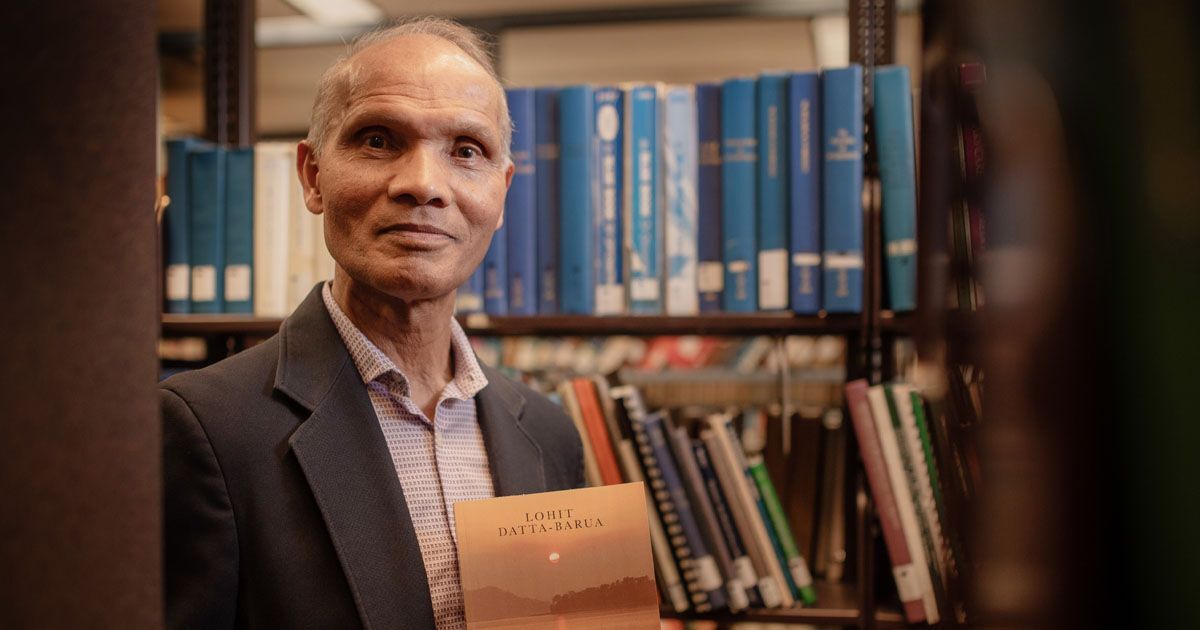
Mitra Phukan
Learning Assamese Language: A Brief Handbook is a laudable attempt to put down the basic tenets of grammar, syntax, and usage of the Assamese language in such a way that learners, both young and old, can get an idea of this tongue, and gain proficiency.
The author, Dr Lohit Datta Barua, has been a US citizen for decades now. He has devoted his lockdown year to writing this book to help learners get a sense of the language, and its usage. This book will surely be of help to both insiders and outsiders to gain knowledge of the language.
The volume will be especially helpful to second-generation migrants whose parents had left their homeland decades ago. This second generation of the diaspora may know a smattering of Assamese, thanks to the efforts of their parents to teach them the “language of the land they came from”, even though their children’s links to that land may be increasingly tenuous. It is admirable when the children of migrants, who have lived their lives surrounded by languages other than their parents’ mother tongues, make the effort to know, and learn this language. But, they do not usually know the logic behind the usage, neither are they conversant with the grammar of it. This book will certainly be of great use to them. And, by migrants, it is not just those who settle outside the country, but also outside the State, though within the country.
The book is methodically written. Since the target readership is those who are learning the language either as adults or children, and also teachers, it is relevant that concepts are explained in English. Notions of grammar and vocabulary, composition, spelling, the alphabet and pronunciation are all laid out clearly for the learner. Each lesson builds on previous ones in a logical sequence, clearly and without creating confusion. Helpfully, worksheets, too, are provided. The complexities of grammar are dealt with lucidly, with tables and examples, which help the student to get a grasp over the language.
The Appendix provides valuable information additionally, in the form of idioms, proverbs, synonyms, antonyms and so on. In fact, the list of idioms will be of help to many who may not be familiar with these usages, even though they are, otherwise, speakers of Assamese, with high levels of fluency. There are helpful bits about the correct salutation to use when writing letters to different people, and how to sign off. Unlike English, Assamese pronouns also reflect levels of respect and familiarity. This makes things a little complicated, but the book brings clarity to this aspect of the language, also.
This is a handbook, rather than an exhaustive tome. But, it does get down to the basics, in a way that makes sense for the learner. Though the best way to learn a language is to actually immerse oneself in it, and surround oneself with speakers of that tongue, the importance of books of this kind is immense; also, as it gives a logical take on usage. It also provides a handy reference book to put forward fundamental concepts and to clear linguistic confusions. The book gains value because it is written from the perspective of a native speaker whose primary language outside the home, as a migrant, has been English. The mother tongue remains for him a familiar language, but because he is also immersed in English, he knows the pitfalls that may lie in wait for the first-time learners of Assamese. Another strength is that it is written by a practitioner, rather than a professional linguist. This makes the book accessible to the lay person, also.
Perhaps the author can think of having an audio version of this handbook also in the future, to make it even more accessible for others.
The volume has an important Forward by Dr Kuladhar Saikia, current President of the Asam Sahitya Sabha, where he lauds the effort, intent and meticulousness behind the book. The blurb, by Dr Amarjyoti Choudhury, noted academician, scholar and current editor of Dainik Asom, is also noteworthy for the praise bestowed on the book.
The volume is published by Spandan Prakash, and is priced at Rs 250.

